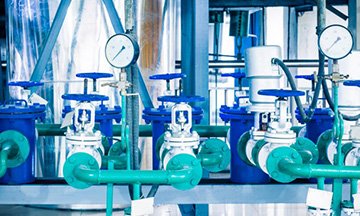Safety Instrumented Systems Training Course
| Date | Format | Duration | Fees | |
|---|---|---|---|---|
| 22 Apr - 26 Apr, 2024 | Live Online | 5 Days | $2250 | Register |
| 02 Jun - 06 Jun, 2024 | Live Online | 5 Days | $2250 | Register |
| 17 Jul - 19 Jul, 2024 | Live Online | 3 Days | $1750 | Register |
| 26 Aug - 30 Aug, 2024 | Live Online | 5 Days | $2250 | Register |
| 20 Oct - 24 Oct, 2024 | Live Online | 5 Days | $2250 | Register |
| 25 Nov - 29 Nov, 2024 | Live Online | 5 Days | $2250 | Register |
| Date | Venue | Duration | Fees | |
|---|---|---|---|---|
| 19 May - 23 May, 2024 | Doha | 5 Days | $4950 | Register |
| 20 May - 24 May, 2024 | Dubai | 5 Days | $4750 | Register |
| 24 Jun - 28 Jun, 2024 | Dubai | 5 Days | $4750 | Register |
| 08 Jul - 10 Jul, 2024 | Vienna | 3 Days | $4475 | Register |
| 15 Jul - 19 Jul, 2024 | Dubai | 5 Days | $4750 | Register |
| 12 Aug - 16 Aug, 2024 | Dubai | 5 Days | $4750 | Register |
| 02 Sep - 06 Sep, 2024 | Dubai | 5 Days | $4750 | Register |
| 06 Oct - 10 Oct, 2024 | Doha | 5 Days | $4950 | Register |
| 21 Oct - 25 Oct, 2024 | Dubai | 5 Days | $4750 | Register |
| 11 Nov - 15 Nov, 2024 | Dubai | 5 Days | $4750 | Register |
| 09 Dec - 13 Dec, 2024 | Dubai | 5 Days | $4750 | Register |
Course Overview
Starting from the essentials, this course gives the engineering requirements for the specification, design, analysis, and justification of safety-instrumented systems (SIS) for the process industries. What is SIL study? Participants will discover how to determine and regulate safety integrity levels and evaluate whether proposed or existing systems meet the performance requirements.
Without the comfort of learning from experience, organizations must foresee and set in place preventative risk control measures before major incidents and accidents occur.
This Zoe training course will empower you with the consciousness of knowing the safety instrumented systems (SIS) life cycle of the process plant.
Course Objectives
Upon completing this Safety Instrumented Systems Certification course successfully, participants will be able to:
- Differentiate between process control and safety control
- Implement the ISA84 standard
- Evaluate process risk levels
- Calculate and determine Safety Integrity Levels (SILs) using a variety of techniques
- Analyse the performance of different logic system technologies
- Examine the performance of the various sensor, logic, and final element
Training Methodology
This collaborative Safety Instrumented Systems Course will comprise the following training methods:
- Lectures
- Seminars and Presentations
- Group Discussions
- Assignments
- Case Studies and Functional Exercises
Zoe Talent Solutions follows the ‘Do-Review-Learn-Apply’ model.
Organisational Benefits
Companies who nominate their employees to participate in this Safety Instrumented Systems Course can benefit in the following ways:
- Keep your company one step ahead with this all-inclusive overview of Safety Instrumented Systems (SIS)
- Assist technical committees to create, publish and revise working standards relating to Safety Instrumented Systems (SIS)
- Carefully study examples and case studies to illuminate the material being deliberated and ensure that the material is appropriate to the organisation represented
- Leave with an awareness and understanding of their roles and responsibilities in the workplace in relation to Safety Instrumented Systems (SIS)
Personal Benefits
Individuals who participate in this Safety Instrumented Systems Course can gain from it in the following ways:
- Keep up with late-breaking developments in Safety Instrumented Systems by studying new literature and other sources of information
- Benefit from a tailor-made academic program for technicians or equivalent workforce involved in Safety Instrumented Systems
- Get yourself trained, assessed, and certified by experts in the Safety Instrumented Systems
- Provide examples of issues that they encounter during their normal working activities and get possible solutions
Who Should Attend?
Safety Instrumented Systems Certification training course would be suitable for:
- Personnel’s responsible for safety instrumentation systems
- Personnel’s who want to understand and use safety instrumentation systems (SIS)
- Asset management team members
- Instrument and Process Control Engineers and Technicians
- Mechanical engineers and Technicians
- Operations and Process Engineers
Course Outline
MODULE 1: Introductions
- Managing Risk in Oil and Gas Timeline of Disasters and Standards
- What Is a Safety Instrumented System?
- Confusion in the Industry Technology Choices, Redundancy Choices, Field Devices and Test Intervals
- Industry Standards, Regulations, Recommendations, Guidelines and HSE – PES
- Generic and Application Sector Standards
- Safety Instrumented System Standards: IEC 61508. ANSI/ISA-84.00.01, IEC 61511, NFPA 85, API RP 556, API RP 14C, OSHA
- Design Lifecycle-Findings of the HSE
- Hazard & Risk Analysis
- SIS Design & Engineering
MODULE 2: SIS-Safety Instrumented Systems
- What is SIF (IPF)?
- What is a Safety Instrumented System (SIS)?
- SIS Safety Lifecycle
- Lifecycle Graphic
MODULE 3: HAZOP & LOPA
- SIS Safety Lifecycle – Hazard Identification
- Defining a Hazard
- The HAZOP Process
- GP 48-02 HAZOP process – simplified
- Consequence Severity and Likelihood – Determining Risk Ranking
- Risk Matrix and example
- Safety criteria, Environmental criteria, Commercial criteria
- Tolerable Risk
MODULE 4: HAZOP & SILs
- SIL Determination
- Layers of Protection Analysis (LOPA):
- IEC 61508 / IEC 61511 – Risk graph
- Fault Trees, Safety Integrity Levels (SIL)
MODULE 5: Layers of Protection & LOPA
- Layers of Protection – The Swiss Cheese Model
- Layers of Protection Analysis (LOPA)
- LOPA – Steps (provided for reference)
- Another model to look at how LoPs mitigate risk to the tolerable level – Over-pressure example
- LOPA – How much credit for LoPs?
- Applying LoPs to reduce risk
- LOPA – Participant requirements
- Process industry LoP Example – Simple vessel, Simple vessel/reactor
- Requirements for Layers of Protection – Four Further Criteria
- LOPA example – multiple causes
- HAZOP vs. SIL
MODULE 6: Basic Process Control System (BPCS) Layers of Protection
- Instrument Layers of Protection are in Various Systems
- Operating Limits
- BPCS Layers of Protection – 1. Control Loop, 2. Safety Related Alarm (SRA), 3. BPCS Interlock Function
- Other requirements for BPCS LoPs – Independence, Identification on HMI graphics
- Identification of Control Loop & SRA on the HMI graphics – Examples
- Let’s take a closer look at Alarm Requirements
- Critical Fault Alarms
- Identification of SRA’s in the Alarm
- Safety Related Alarm Register
MODULE 7: Understanding Failures
- The Swiss Cheese Model – Understanding Failure Representation and Impact
- Understanding Failure – Example of a PC and a Transmitter
- Types of Failures – Random Hardware Failures and Failures due to Human Errors
- Effect of a Failure – Safe and Dangerous Failures
- Safe and Dangerous Failures – Examples
- Failure Modes – Detected or Undetected
- Four Failure Modes
- Example of an Undetected Failure
- Common Cause and Common Mode Failures
- Avoiding Common Cause Failures in Operations and Maintenance
- Exercise – A potential failure
MODULE 8: Human Error
- Human error – Consider a simple task which we do very often
- The Level of Human Error
- Human Error – The Basics
- The normalisation of Deviance – Exercise
- Human Error and the SIS Safety Lifecycle
- Human Error in Hazard Identification and Layer of Protection Definition – Examples (for Reference), Detailed Engineering and Assembly – Examples (for Reference), Installation, Commissioning and Validation – Examples (for Reference), Operation and Maintenance – Examples (for Reference), Modification or Decommissioning – Examples (for Reference)
- Human Error related to SIS Safety Lifecycle Management – Examples (for Reference)
- Avoiding Human Errors – What can we do?
- An Example – Avoiding Human Error
- Safety Culture
MODULE 9: Safety Integrity Level (SIL) Categorization and Safety Integrity
- HAZOP vs. SIL
- SIL Determination
- Probability and likelihood of Failure on Demand and Risk Reduction
- PFD calculation for Safety Instrumented Function
- Safety Integrity Level
- Safety Integrity Level Categorisation
- Environmental and Commercial Integrity Levels
- Other Integrity Level functions – SIL 0 and no SIL rating
- Hardware Selection, Reliability, Fault Tolerance and Failure Robustness
- Fault-Tolerant Architecture – 1oo2, Failure Robust Architecture – 2oo2, Architecture Resilience – 2oo3 Inputs and 1oo2 Outputs
- Summary of Architecture – Advantages & Disadvantages
- Probability of Failure and Purpose of Proof Testing
- Proof Testing Impact of PFD
MODULE 10: Override Control
- Override Definition, Exercise – Bypasses, Examples of Overrides
- A typical facility and its protection
- All layers of protection in place
- Fire and Gas Detection taken out for maintenance
- Temporary mitigation put in place
- Implications of Overrides
- Override Procedure – Typical ‘Best Practice’ Workflow
- Override-Equivalent Compensating Measures
- Safety Override Considerations
- Safety Override and Risk Assessment – SORA
- Generation of a SORA
- Reusing SORAs
- Override Key Performance Indicators (KPIs)
- Override Decision Tree
MODULE 11: Operations Role in the SIS Safety Lifecycle/Operations Role in Maintaining LoP Integrity
- Operators Role in the SIS Safety Lifecycle
- Exercise – Control Loop credited in LOPA
- Control Loop credited in LOPA – Manual mode
- Control Loop credited in LOPA – Setpoint adjustment
- Control Loop credited in LOPA – Hardware Failures
- Control Loop credited in LOPA – Poor Loop Performance
- Exercise – Safety Related Alarms
- Safety Instrumented Functions – Proof Testing
- Safety Instrumented Functions – Minimizing Human errors
- BPCS Interlocks
MODULE 12: Demand Tracking/Maintenance Role in the SIS Safety Lifecycle/LoP Maintenance & Proof Testing
- What is a “Demand”?
- A simple LoP example
- What creates Demands on an LoP?
- Which Demands to Track?
- Benefits of Demand Tracking
- How to Track Demands?
- Safe Operating Limits and Demand Tracking
- Maintenance Role in Safety Lifecycle
MODULE 13: LoP Maintenance & Proof Testing
- Exercise – Routine Maintenance on a car
- Different types of maintenance
- General Maintenance – Exercise
- Routine Maintenance Planning
- Proof Test Coverage – Proof Test Coverage from various Means of Testing on the SIS Input
- Inspection Tasks
- Proof Testing impact of PFD
- Partial Stroke Testing
- Proof Testing – Definition, Example Analogy – Why do we proof test?, Principles, End-to-End Testing, Continuously or in Parts, Online or Offline, A comparison of two variations of ‘End-to-End’ testing, Continuous vs. Testing-In-Parts
- Continuous and Testing-In-Parts – Advantages and Disadvantages
- Online & Offline Testing – Advantages
- Proof Testing – Inputs, Logic Solver, and Outputs
- Proof Testing – Data Captured
- Exercise – Does this valve “pass” on its proof test?
- Exercises and Summary











